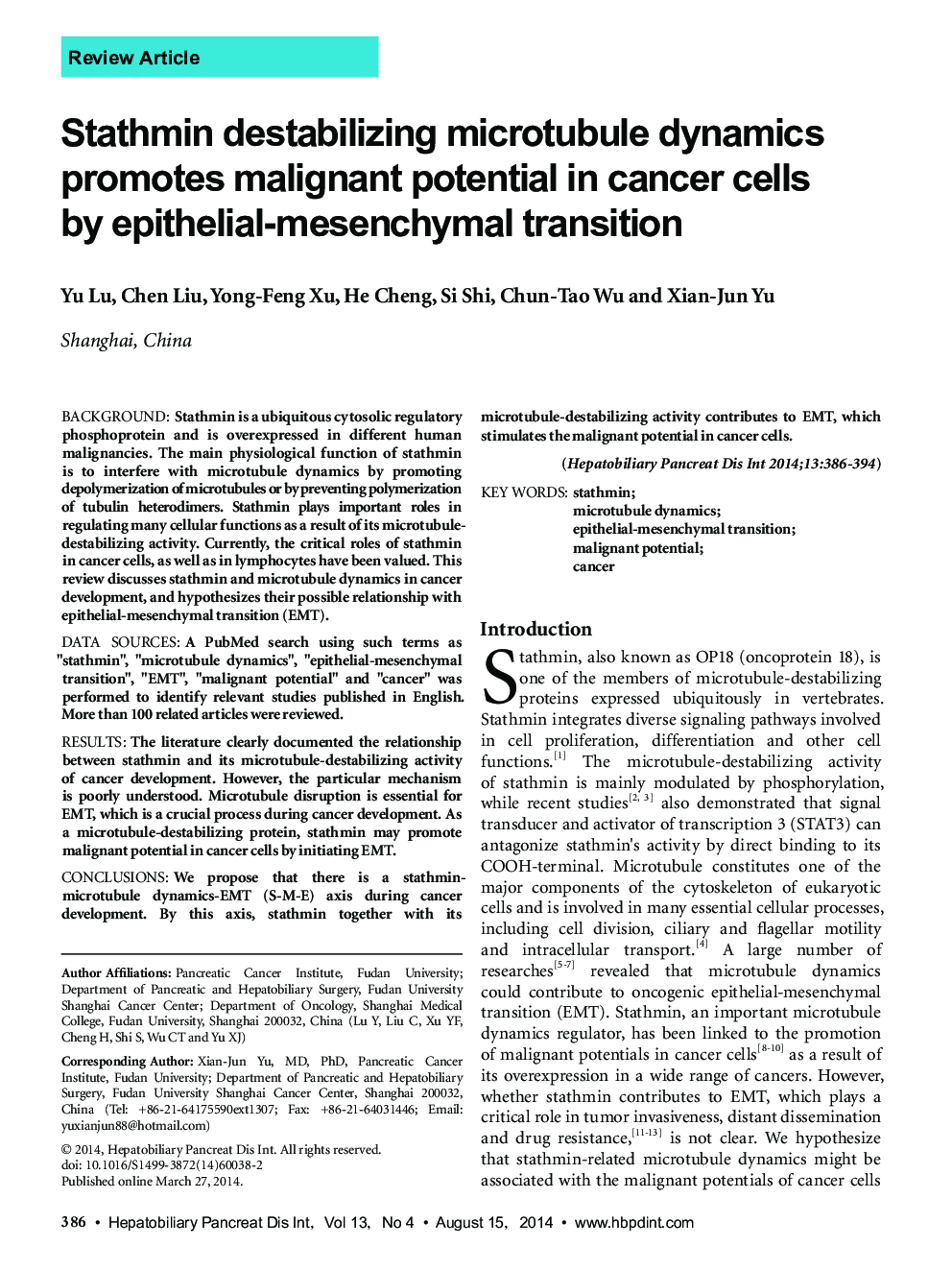| کد مقاله | کد نشریه | سال انتشار | مقاله انگلیسی | نسخه تمام متن |
|---|---|---|---|---|
| 3337318 | 1213794 | 2014 | 9 صفحه PDF | دانلود رایگان |

BackgroundStathmin is a ubiquitous cytosolic regulatory phosphoprotein and is overexpressed in different human malignancies. The main physiological function of stathmin is to interfere with microtubule dynamics by promoting depolymerization of microtubules or by preventing polymerization of tubulin heterodimers. Stathmin plays important roles in regulating many cellular functions as a result of its microtubule-destabilizing activity. Currently, the critical roles of stathmin in cancer cells, as well as in lymphocytes have been valued. This review discusses stathmin and microtubule dynamics in cancer development, and hypothesizes their possible relationship with epithelial-mesenchymal transition (EMT).Data SourcesA PubMed search using such terms as “stathmin”, “microtubule dynamics”, “epithelial-mesenchymal transition”, “EMT”, “malignant potential” and “cancer” was performed to identify relevant studies published in English. More than 100 related articles were reviewed.ResultsThe literature clearly documented the relationship between stathmin and its microtubule-destabilizing activity of cancer development. However, the particular mechanism is poorly understood. Microtubule disruption is essential for EMT, which is a crucial process during cancer development. As a microtubule-destabilizing protein, stathmin may promote malignant potential in cancer cells by initiating EMT.ConclusionsWe propose that there is a stathmin-microtubule dynamics-EMT (S-M-E) axis during cancer development. By this axis, stathmin together with its microtubule-destabilizing activity contributes to EMT, which stimulates the malignant potential in cancer cells.
Journal: Hepatobiliary & Pancreatic Diseases International - Volume 13, Issue 4, 15 August 2014, Pages 386-394